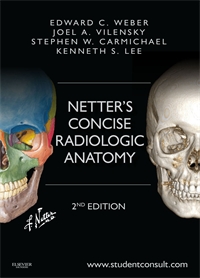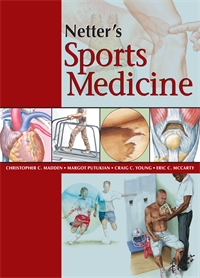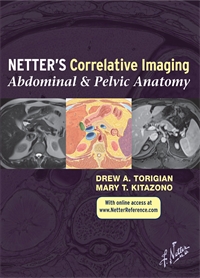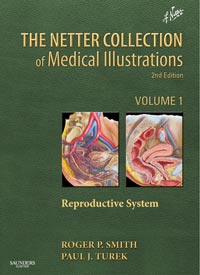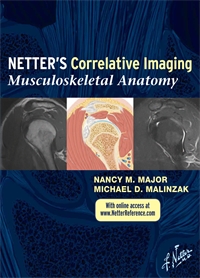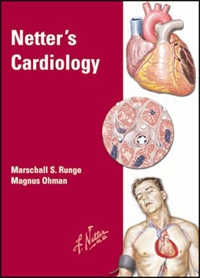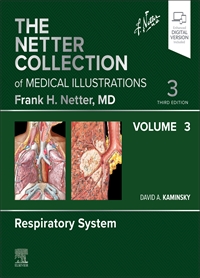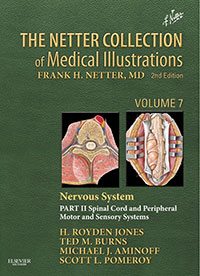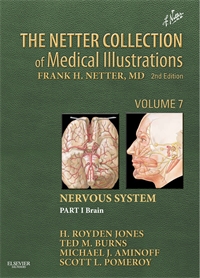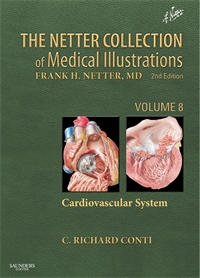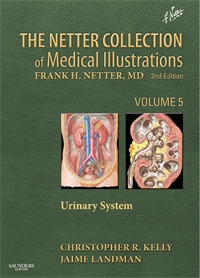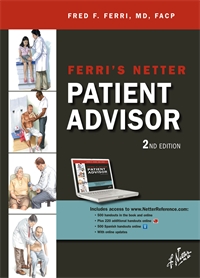Cecil Medicine - 23rd Edition
Author: Lee Goldman, MD and Dennis Ausiello, MD
ISBN: 9781416044789
- Page 140: Schematic of Drug Movement Through the Body,
- Page 140: Representative Concentration Versus Time Plot Used in Pharmacokinetic Studies
- Page 141: Representative Plot of the &Ldquo;Mirror Image&Rdquo; Relationship Between Elimination of Drug and Accumulation of Drug
- Page 142: The Accumulation of Drug Over Time Approaching a Steady State is Shown
- Page 142: The Effect of Increasing Dose on Serum Concentration
- Page 143: The Pattern Produced in a Dose-Response Population Study in Which both Effect and Toxicity are Measured
- Page 152: Pain Transmission and Modulation Pathways
- Page 153: Plasticity of Pain-Processing Circuits
- Page 154: Convergence of Afferents from Diverse Tissues on Pain Projection Neurons in the Thoracic Spinal Cord
- Page 154: Experimental Elucidation of Referred Pain
- Page 155: Algorithm for the Treatment of Pain
- Page 168: Ethanol Metabolism
- Page 168: Time Course of Alcohol Withdrawal.
- Page 190: Production and Actions of Prostaglandins and Thromboxane
- Page 191: The Cyclooxygenase-1 (COX-1) and COX-2 Backbones, Overlaid
- Page 194: The Platelet Prostaglandin G/H Synthase-1 (cyclooxygenase-1) is Depicted as a Dimer
- Page 194: The Absolute Risk of Vascular Complications in Antiplatelet Prophylaxis
- Page 198: Warfarin Inhibition of Vitamin K Epoxide Reductase
- Page 199: Sites of Action of Platelet Inhibitors
- Page 203: Activation of Antithrombin (AT)
- Page 214: Multifactorial Etiology of Disease
- Page 228: Normal Male Karyotype (46,XY)
- Page 228: Chromosome Rearrangement in a Normal Male
- Page 229: Comparative Genomic Hybridization (CGH)
- Page 230: Deletion 22q11.2
- Page 230: Fluorescence In Situ Hybridization Using Multiple Probes (multi-FISH)
- Page 236: Asymmetrical Cell Division
- Page 237: Embryonic Stem Cells
- Page 238: Adult Stem Cells
- Page 240: RNA Interference (RNAi)
- Page 241: Expression Cassette
- Page 253: Activation Pathways in the Innate Immune System
- Page 254: The Interface Between the Innate and Adaptive Immune Systems
- Page 255: Pathways of Antigen Processing and Delivery to Major Histocompatibility Complex (MHC) Molecules.
- Page 256: Maturation of T Cells in the Thymus
- Page 257: B-cell Development and B-cell Differentiation
- Page 260: Two Views of an HLA Class I Molecule
- Page 260: HLA Class II Molecule
- Page 261: Schematic Comparison of the Highly Homologous Heterodimeric Structures of HLA Class I and Class II Molecules
- Page 262: Map of the Human Major Histocompatibility Complex (MHC)
- Page 263: Sequence Comparisons of the Five Most Common DRB1 Alleles in a Northern European White Population
- Page 268: Type I Hypersensitivity
- Page 268: Type II Hypersensitivity
- Page 269: Type III Hypersensitivity
- Page 270: Type IV Hypersensitivity
- Page 279: Direct and Indirect Allorecognition
- Page 281: Killing of Allogeneic Targets
- Page 283: Pathogenic Effect of Complement
- Page 283: Schematic Representation of the Activation of the Classical Pathway and Generation of its C3 Convertase
- Page 283: Schematic Representation of the Activation of the Alternative Pathway and Generation of its C3 Convertase
- Page 284: Schematic Representation of the Activation of the Lectin Pathway and Generation in Concert with the Classical Pathway of a C3 Convertase
- Page 284: Schematic Representation of the Regulators of Complement Activation (RCA) Proteins
- Page 285: Schematic Representation of the Assembly of the Membrane Attack Complex (MAC) on a Cell Membrane
- Page 292: Algorithm for the Evaluation of a Patient with Dyspnea
- Page 295: Jugular Venous Distention
- Page 296: Typical Distention of the Internal Jugular Vein
- Page 296: Normal Jugular Venous Pulse
- Page 297: Schematic Diagrams of the Configurational Changes in the Carotid Pulse and their Differential Diagnosis
- Page 298: Timing of the Different Heart Sounds and Added Sounds
- Page 300: Pitting Ddema in a Patient with Cardiac Failure
- Page 300: Diagnostic Approach to Patients with Edema
- Page 300: Arterial Embolism Causing Acute Ischemia and Cyanosis of the Leg
- Page 301: Severe Finger Clubbing in a Patient with Cyanotic Congenital Heart Disease
- Page 301: Splinter Hemorrhage and Janeway′s Lesions
- Page 301: Eruptive Xanthomas of the Extensor Surfaces of the Lower Extremities
- Page 302: Trends in Age-Standardized Death Rates for the Six Leading Causes of Death in the United States
- Page 303: Relationship Between Lipid Parameters and Relative Risk Reduction in Coronary Heart Disease (Univariate Regression) in a Meta-Analysis of 17 Lipid Intervention Trials
- Page 304: High Sensitivity C-reactive Protein
- Page 306: Basic Structure of the Sarcomere
- Page 307: Important Features of the Cardiac Cell
- Page 307: The Similar Relationship Between Muscle Length and Force in Isolated Muscle and in the Intact Ventricle
- Page 308: Time Sequence of Events During a Single Cardiac Cycle
- Page 309: Cardiac Performance
- Page 310: Myocardial Oxygen Consumption and Energy Metabolism
- Page 313: Normal Radiographic Anatomy, Magnetic Resonance Images
- Page 314: Measurement of the Transverse Cardiac Diameter
- Page 314: Left Atrial Enlargement in Mitral Valve Disease.
- Page 315: Left Ventricular Dilation, Aortic Insufficiency
- Page 315: Left Ventricular Aneurysm
- Page 315: Right Ventricular Enlargement Seen in a Patient with Resistive Pulmonary Hypertension Secondary to an Atrial Septal Defect
- Page 316: Location of the Mitral and Aortic Valves
- Page 316: Calcified Myocardial Infarctions
- Page 317: Calcific Pericarditis
- Page 318: Superior Pericardial Reflection with Effusion After a Tap
- Page 318: Hilum Overlay Sign
- Page 318: Pericardial Effusion with Posterior Displacement of the Epicardial Fat Line
- Page 319: Pulmonary Vasculature
- Page 319: Interstitial Pulmonary Edema
- Page 319: Alveolar Pulmonary Edema, Acute Myocardial Infarction
- Page 320: Position of Pacemaker Electrodes
- Page 320: Cardiac Conduction System
- Page 321: Inscription of a Normal Electrocardiogram (ECG)
- Page 322: Normal Cardiac Activation as Manifested in the Limb Leads
- Page 323: Precordial Leads
- Page 323: Axis of Electrical Activation
- Page 323: Chart of Frontal Plane Axes
- Page 324: Normal Electrocardiogram
- Page 325: Fascicular and Bundle Branch Blocks
- Page 326: Left Bundle Branch Block (LBBB)
- Page 326: Left Ventricular Hypertrophy
- Page 326: Normal Two-Dimensional Transthoracic Echocardiogram in Systole and Diastole
- Page 327: Atrial Septal Aneurysm with a Patent Foramen Ovale
- Page 329: left Ventricular Cavity
- Page 329: Tricuspid and Mitral Valves
- Page 329: Example of an Abnormal Dobutamine Stress Echocardiographic Study
- Page 330: Aortic Stenosis
- Page 330: Stress and Rest Short-Axis 99mTc-sestamibi Tomograms
- Page 339: Ascending Aortic Dissection
- Page 340: Basal Inferior Aneurysm
- Page 341: Aortic Coarctation
- Page 341: Anomalous right Coronary Artery (RCA)
- Page 346: Stages of Heart Failure
- Page 348: Pathophysiology of Heart Failure
- Page 349: Heart Failure
- Page 359: Stages of Heart Failure
- Page 371: Acute Pulmonary Edema
- Page 373: Initial Approach to Classification of Cardiomyopathy
- Page 376: Hypertrophic Obstructive Cardiomyopathy
- Page 377: Hypertrophic Cardiomyopathy
- Page 387: Amyloidosis
- Page 391: Cardiac Action Potential Waveforms and Underlying Ionic Currents in Adult Human Ventricular and Atrial Myocytes
- Page 391: Electrical Activity in the Myocardium
- Page 392: Accessory Pathway in Sinus Rhythm and in Orthodromic Re-entrant Tachycardia
- Page 393: Classification of Cardiac Arrhythmia Mechanisms
- Page 393: Unidirectional Block as a Result of Abnormal Repolarization, Conduction, or Intracellular Calcium Homeostasis
- Page 394: Determinants of Cardiac Arrhythmias
- Page 395: Evaluation of Patients with Symptoms of Palpitation, Dizziness, or Syncope
- Page 399: Narrow-Complex Tachycardias
- Page 400: Wide-Complex Tachycardias
- Page 406: Isolated Premature Complexes
- Page 407: P-QRS Relationship in Supraventricular Tachycardia
- Page 408: Atrial Flutter and Atrial Fibrillation
- Page 408: Wolff-Parkinson-White Syndrome
- Page 411: Management of Recent-Onset Atrial Fibrillation
- Page 412: Sinus Node Dysfunction
- Page 413: Atrioventricular (AV) Block
- Page 414: 2:1 and Third-Degree Block
- Page 416: Multiform Premature Ventricular Complexes (PVCs)
- Page 416: Parasystole: Sinus Rhythm with a Competing Ventricular Parasystolic Focus
- Page 417: Ventricular Tachyarrhythmias
- Page 422: Approach to a Patient Resuscitated from Ventricular Fibrillation
- Page 425: Risk Stratification for Primary Prevention of Death in Patients with Ischemic and Nonischemic Cardiomyopathy
- Page 431: Absolute Risk of Coronary Artery Disease and Stroke Mortality by Usual Systolic Blood Pressure (BP) Levels
- Page 431: Hypertension Control Rates in North America and Europe
- Page 432: Aging and Pulse Pressure
- Page 432: Joint Influences of Systolic Blood Pressure and Diastolic Blood Pressure on Coronary Heart Disease Risk
- Page 432: Geographic Variation in Hypertension Prevalence in Populations of African and European Ancestries
- Page 434: 24-hour Ambulatory Blood Pressure (BP) Monitor Tracings of Two Different Patients
- Page 435: Absolute Risk of Cardiovascular Disease (CVD)
- Page 436: Computed Tomographic Angiogram with Three-Dimensional Reconstruction
- Page 437: Mendelian Forms of Hypertension that Cause Mineralocorticoid-Induced Hypertension
- Page 445: Meta-Meta-Analysis of Randomized Controlled Intervention Trials
- Page 448: Hypertensive Retinopathy
- Page 453: Signaling Pathways of the Bone Morphogenetic Protein Receptor Type II (BMPR-II)
- Page 454: Pulmonary Arterial Hypertension
- Page 455: Pulmonary Hypertension
- Page 457: Pulmonary Hypertension
- Page 458: Pulmonary Hypertension
- Page 460: Congenital Heart Disease
- Page 461: Erythrocytosis of Cyanotic Congenital Heart Disease
- Page 461: Cyanotic Congenital Heart Disease
- Page 462: Electrocardiographic Hallmark in Atrial Septal Defect
- Page 463: Atrial Septal Defect
- Page 464: Patent Ductus Arteriosus
- Page 467: Coarctation of the Aorta
- Page 468: Tetralogy of Fallot Repair
- Page 473: Arterial Wall Biology and Shear Stress
- Page 474: Atherosclerotic Plaque–dependent and Hyperthrombogenic Blood–dependent Arterial Thrombosis
- Page 474: Coronary Atherothrombosis
- Page 475: Unstable Angina
- Page 479: Evaluation of Chest Pain
- Page 481: Myocardial Ischemia
- Page 483: Angina Pectoris
- Page 485: Chronic Stable Angina
- Page 493: Acute Chest Pain
- Page 495: Acute Coronary Syndrome (ACS)
- Page 495: Acute Chest Pain
- Page 497: Acute Coronary Syndrome
- Page 502: Acute Anterolateral Myocardial Infarction
- Page 503: Acute Inferoposterior Myocardial Infarction
- Page 506: ST Segment Elevation Myocardial Infarction (STEMI)
- Page 515: ST Segment Elevation Myocardial Infarction (STEMI) and Diminished Ejection Fraction (EF)
- Page 517: ST Segment Elevation Myocardial Infarction (STEMI)
- Page 518: Coronary Angioplasty Technique
- Page 518: Balloon Angioplasty Catheter
- Page 519: Balloon-expandable Coronary Stent
- Page 519: Placement of a Sirolimus-eluting Stent
- Page 521: Acute Myocardial Infarction
- Page 528: Aortic Stenosis
- Page 530: Mitral Stenosis
- Page 531: Mitral Regurgitation
- Page 532: Two-dimensional Echocardiogram of Mitral Regurgitation with Doppler Flow Mapping Superimposed on a Portion of the Image
- Page 534: Aortic Regurgitation Caused by Infective Endocarditis
- Page 536: Different Types of Commonly Used Prosthetic Valves
- Page 539: Petechiae in Infective Endocarditis
- Page 540: Osler′s Node in Infective Endocarditis
- Page 542: Infective Endocarditis
- Page 548: Transverse (Axial) Magnetic Resonance Image and Transthoracic Echocardiogram
- Page 550: Pericarditis
- Page 550: Acute Pericarditis
- Page 551: Acute Pericarditis
- Page 551: Pericardial Effusion
- Page 553: Transthoracic Echocardiogram from the Subcostal Approach
- Page 553: Transthoracic Echocardiogram from the Parasternal Long-axis Window
- Page 554: Cardiac Tamponade
- Page 554: Cardiac Tamponade
- Page 554: Pericardial Calcification
- Page 555: Constrictive Pericarditis
- Page 555: Constrictive Pericarditis
- Page 557: Abdominal Aortic Aneurysm
- Page 558: Classification Systems for Aortic Dissection
- Page 559: Acute Aortic Dissection
- Page 560: Aortic Dissection
- Page 560: Intramural Aortic Hematoma
- Page 562: Ankle-Brachial Index (ABI)
- Page 563: Peripheral Arterial Disease
- Page 564: Critical Ischemia of the Foot
- Page 564: Dry Gangrene of Two Toes in a Patient with Diffuse Atheroma
- Page 565: Therapy for Peripheral Arterial Disease
- Page 566: Percutaneous Transluminal Angioplasty (PTA)
- Page 568: Livedo Reticularis
- Page 569: Livedoid Vasculitis
- Page 570: Buerger′s Disease
- Page 571: Raynaud′s Phenomenon
- Page 572: Pernio on the Toes of the Right Foot
- Page 573: Frostbite of the Hand
- Page 575: Deep Venous Thrombosis (DVT)
- Page 576: Deep Venous Thrombosis
- Page 577: Intraluminal Filling Defect in the Popliteal Vein.
- Page 577: Thrombosis of the Popliteal Vein
- Page 578: Deep Venous Thrombosis
- Page 582: Deep Venous Thrombosis
- Page 583: The Number of Heart Transplant Procedures by Year
- Page 586: Kaplan-Meier Survival by Era
- Page 592: Chronic Cough
- Page 594: Flow-volume Loop Configurations in a Spectrum of Airway Lesions
- Page 596: Diffuse Alveolar Damage
- Page 596: Hydrostatic Pulmonary Edema Due to Left-sided Heart Failure
- Page 597: Transfusion Reaction
- Page 597: Diffuse Reticular Lung Disease
- Page 598: Left Ventricular Failure
- Page 598: Primary Pulmonary Arterial Hypertension
- Page 598: Emphysema
- Page 599: Basilar Pulmonary Disease
- Page 600: Multifocal Pulmonary Opacities
- Page 600: Occupational Asbestos Exposure
- Page 601: Spontaneous Tension Hydropneumothorax
- Page 601: Chest Radiograph with Superimposed Mediastinal Stripes
- Page 602: Patient with Anterior Mediastinal Teratoma
- Page 604: Mucosa and its Submucosal Structures
- Page 607: Spirometry
- Page 613: Asthma
- Page 616: Asthma
- Page 616: Commonly Used Inhalers
- Page 619: Course of Lung Function Decline Through Adulthood
- Page 620: Maximum Expiratory Flow-Folume Curve (Left) with an Explanatory Model (Right)
- Page 621: Chronic Obstructive Pulmonary Disease (COPD)
- Page 622: Emphysema
- Page 622: Emphysema
- Page 623: Chronic Obstructive Pulmonary Disease (COPD)
- Page 633: Bronchiectasis
- Page 633: Endobronchial Papillary Tumor
- Page 635: Left Lower Lobe Atelectasis
- Page 637: Alveolar Filling Disorders
- Page 638: Pulmonary Alveolar Proteinosis
- Page 638: Pulmonary Alveolar Proteinosis
- Page 640: Bronchioloalveolar Cell Cancer
- Page 654: Occupational Interstitial Lung Disease (ILD)
- Page 654: Berylliosis
- Page 655: Silicosis
- Page 669: Skin Lesions of Sarcoidosis
- Page 669: Pneumonia
- Page 670: Sarcoidosis
- Page 671: Sarcoidosis
- Page 676: Pneumonia
- Page 677: Cavitary Lesions
- Page 679: Empirical Antimicrobial Therapy in Pneumonia
- Page 690: Acute Pulmonary Emboli
- Page 691: Suspected Acute Pulmonary Embolism
- Page 691: High-probability Ventilation-perfusion Scan.
- Page 694: Massive Acute Pulmonary Embolism
- Page 699: Ultrasound Image of the Left Hemithorax
- Page 700: Computed Tomography of the Left Hemithorax
- Page 700: Pleural Effusion
- Page 703: Anatomic Compartments of the Mediastinum
- Page 704: Mass in the Anterior Mediastinum
- Page 704: Mass in the Anterior Mediastinum
- Page 704: Mass in the Anterior Mediastinum
- Page 705: Superior Vena Cava Obstruction in Bronchial Carcinoma
- Page 707: Obstructive Sleep Apnea
- Page 708: Obstructive Sleep Apnea
- Page 719: Tracings of the Movements of the Rib cage (RC), the Abdomen (AB), and their Sum (VT) Recorded by Inductance Plethysmography
- Page 720: Capnogram
- Page 721: Relationship Between Tidal Volume and Airway Pressure in a Mechanically Ventilated Patient
- Page 721: Auto-PEEP
- Page 722: Normal Oxyhemoglobin Dissociation Curve
- Page 726: The Oxyhemoglobin Association-Dissociation Curve
- Page 727: Mechanical Ventilation
- Page 728: Diseases Causing Acute Respiratory Failure
- Page 733: Acute Respiratory Distress Syndrome
- Page 737: Approach to the Patient with Shock
- Page 737: Pressure-volume Curve of a Lung with Diffuse Alveolar Edema
- Page 738: Mechanisms by Which Mechanical Ventilation May Lead to Distal Organ Dysfunction
- Page 740: Acute Respiratory Distress Syndrome (ARDS)
- Page 741: Mechanical Ventilation and Extubation
- Page 743: Different Forms of Shock
- Page 745: Different Causes of Shock
- Page 748: Diagnosis and Treatment of Shock
- Page 764: Control of Human Thermoregulation
- Page 767: J (Osborne) Wave
- Page 788: Electric Injury
- Page 790: Electric Injury
- Page 792: Widened Superior Mediastinum
- Page 793: Arteriography of the Chest
- Page 793: Abdominal Injury
- Page 793: Intraperitoneal and Retroperitoneal Injury
- Page 794: Positive Focal Abdominal Sonography In Trauma (FAST) Study
- Page 796: Assessing Burn Size As a Percentage of Total Body Surface Area
- Page 807: Dysmorphic Erythrocytes
- Page 807: Isomorphic Erythrocytes
- Page 807: Hyaline Cast
- Page 808: Hyaline Cast
- Page 808: Hyaline Cast
- Page 808: Typical Hexagonal Cystine Crystal
- Page 808: Oxalate Crystals
- Page 808: Coffin-lid Crystals of Magnesium Ammonium Phosphate (Struvite)
- Page 809: Urate Crystals
- Page 810: Normal Sagittal Renal Ultrasound
- Page 810: Delayed Excretion In the Left Kidney Secondary to a Distal Calculus
- Page 811: Right Renal Artery Stenosis
- Page 811: Renal Amyloidosis
- Page 811: Systemic Lupus Erythematosus
- Page 814: Sagittal Section of the Human Kidney
- Page 814: Superficial and Juxtamedullary Nephrons
- Page 815: Vascular Arrangement In the Renal Cortex and Medulla
- Page 815: Glomerulus
- Page 815: Cross-sectional View of the Glomerulus
- Page 816: Cross Section of the Glomerular Capillary Wall
- Page 816: Fractional Clearances of Diethylaminoethyl (DEAE) Dextran (Positively Charged Molecule), Neutral Dextran (D) (Neutral Charge), and Dextran Sulfate (DS) (Negatively Charged Molecule)
- Page 817: Major Mechanism for Bicarbonate Reclamation In the Proximal Convoluted Tubule
- Page 818: Essential Components of the Countercurrent Multiplication and Exchange Systems In the Kidney
- Page 820: Transport Characteristics of Type Aand Type B Intercalated Cells of the Cortical Collecting Duct
- Page 821: Composition of Body Fluid Compartments
- Page 822: Relationship Between Arginine Vasopressin (AVP) and Osmolality
- Page 829: Major Transport Processes Along the Nephron Segment and Primary Sites of Action of Diuretics
- Page 831: Diagnostic Approach to Hyponatremia
- Page 833: Patterns of Serum Antidiuretic Hormone (ADH) Abnormalities In the Syndrome of Inappropriate ADH Secretion (SIADH)
- Page 834: Treatment of Severe Normovolemic Hyponatremia
- Page 835: Structure of Nonpeptide, Orally Available Vasopressin V2 Or V1/V2 Mixed-receptor (YM 097) Antagonists In Clinical Development
- Page 862: Main Categories of Acute Kidney Injury
- Page 863: Mechanisms of Prerenal and Intrinsic Acute Renal Injury
- Page 863: Phases of Acute Kidney Injury
- Page 869: Minimal Change Glomerulopathy
- Page 869: Minimal Change Disease
- Page 870: Patterns of Focal Segmental Glomerulosclerosis
- Page 870: Glomerulus With Stage II Membranous Glomerulopathy
- Page 870: Membranous Glomerulopathy
- Page 873: Anti–Glomerular Basement Membrane (GBM) Glomerulonephritis
- Page 875: Lupus Nephritis
- Page 877: Renal Changes In Analgesic Nephropathy
- Page 881: Renal Changes in Analgesic Nephropathy
- Page 888: Stages of Diabetic Nephropathy
- Page 890: Treatment of Diabetic Nephropathy
- Page 911: Key Events In the Development of the Urinary Tract
- Page 912: Horseshoe Kidney
- Page 912: Ectopic Ureter Associated With a Ureterocele
- Page 912: Megaureter With the Aperistaltic Segment
- Page 913: Bladder Outlet Obstruction Caused By Posterior Urethral Valves
- Page 915: Transport In the Thick Ascending Limb (TAL) and the Pathophysiology of Bartter's Syndrome
- Page 923: A Decrease In Glomerular Filtration Rate (GFR) Is Followed By an Increase In Serum Phosphorus and a Decrease In Serum Calcium
- Page 924: Breakdown of Dietary Protein
- Page 927: The Course of Renal Insufficiency From Initial Renal Damage to ESRD
- Page 929: Outline of Management of Patient In the Various Stages of Chronic Kidney Disease
- Page 966: Pneumoperitoneum On Conventional Radiography
- Page 966: Metastatic Melanoma On Barium Study of the Upper Gastrointestinal Tract
- Page 967: Acute Cholecystitis On Ultrasound Examination
- Page 967: Portal Vein Thrombosis On Ultrasound Examination
- Page 968: Multiple Hypervascular Liver Lesions On CT
- Page 968: Pedunculated Polyp
- Page 969: Hepatic Cavernous Hemangiomas On MR
- Page 969: Pancreatic Intraductal Papillary Mucinous Neoplasm
- Page 969: Metastatic Gastrointestinal Stromal Tumor
- Page 971: Severe Reflux Esophagitis With Mucosal Erythema and Linear Ulcers With Yellow Exudates
- Page 972: Endoscopic View of Esophageal Varices In the Wall of the Esophagus
- Page 973: Endoscopic Variceal Ligation Technique
- Page 973: Mucosal Telangiectasia (Arteriovenous Malformation) In the Colon
- Page 974: Endoscopic Polypectomy
- Page 974: Impacted Food Bolus
- Page 975: Large Malignant Mass at the Gastroesophageal Junction As Seen Endoscopically
- Page 975: Biliary Sphincterotomy and Stone Removal From the Bile Duct
- Page 976: Biopsy of a Pancreatic Mass
- Page 976: Optical Coherence Tomography of the Stomach
- Page 977: Bleeding Esophageal Varix at the Gastroesophageal Junction
- Page 977: Retroflexed Endoscopic Image of a Mallory-Weiss Tear at the Gastroesophageal Junction
- Page 979: Endoscopic Triage In Acute Upper Gastrointestinal (GI) Bleeding
- Page 981: Approach to Acute Lower Gastrointestinal (GI) Bleeding
- Page 981: Obscure Gastrointestinal Bleeding
- Page 982: Approach to Obscure Or Occult Gastrointestinal Blood Loss and Iron Deficiency Anemia
- Page 984: Fasting and Postprandial Gastroduodenal Manometric Recordings In a Healthy Volunteer
- Page 984: Pelvic Floor and Anorectal Functions During Continence and Defecation
- Page 986: Flow Diagram Outlines Steps In Diagnosis of Idiopathic Gastroparesis and Intestinal Pseudo-obstruction
- Page 987: T Lymphocytes
- Page 989: Management of Constipation
- Page 992: Irritable Bowel Syndrome (IBS)
- Page 996: Dyspepsia
- Page 999: Dysphagia
- Page 1002: Heartburn
- Page 1003: Gastroesophageal Reflux Disease
- Page 1004: Infectious Esophagitis In Patients With Acquired Immunodeficiency Syndrome
- Page 1005: Eosinophilic Esophagitis
- Page 1006: Idiopathic Achalasia
- Page 1007: “Corkscrew” Esophagus In a Patient With Diffuse Esophageal Spasm
- Page 1008: Zenker Diverticulum
- Page 1010: Uncomplicated Erosive Gastritis
- Page 1010: Ulcer at the Anterior Wall of the Duodenal Bulb
- Page 1011: Gastric Mucosa Colonized With Helicobacter Pylori
- Page 1014: Ulcer Crater In the Gastric Wall
- Page 1015: Actively Bleeding Ulcer With a Visible Blood Jet
- Page 1015: Perforated Peptic Ulcer
- Page 1020: Mechanisms of Intestinal Transport of Water and Electrolytes
- Page 1020: Chloride Secretion By Intestinal Crypt Cells
- Page 1023: Acute Diarrhea
- Page 1025: Chronic Diarrhea
- Page 1028: Malabsorption
- Page 1028: Phases of Intestinal Digestion and Absorption of Dietary Fat, Protein, and Carbohydrate
- Page 1033: Intestinal Biopsy Appearance of Flattened Villi, Hyperplastic Crypts, and Increased Intraepithelial Lymphocytes
- Page 1033: Regeneration of Villi After Initiation of a Gluten-free Diet
- Page 1036: Watery Diarrheas
- Page 1037: Severe Or Elusive Diarrheas
- Page 1038: Inflammatory Diarrheas
- Page 1040: Sudan Stain of Stool for Fat
- Page 1044: Ulcerative Colitis
- Page 1045: Crohn's Disease of the Ileum
- Page 1045: Idiopathic Ulcerative Colitis
- Page 1045: A Single Aphthous Ulcer
- Page 1045: Crohn's Disease of the Colon
- Page 1047: Ulcerative Colitis
- Page 1048: Crohn's Disease
- Page 1052: Appendicitis
- Page 1052: Appendicitis
- Page 1053: Diverticulitis
- Page 1054: Colonic Diverticula
- Page 1054: Sigmoid Diverticula
- Page 1056: Neutropenic Colitis
- Page 1058: Peritonitis
- Page 1058: Malignant Ascites
- Page 1060: Adhesion-related Small Bowel Obstruction
- Page 1062: Acute Mesenteric Ischemia
- Page 1063: Ischemic Colitis As a Result of Superior Mesenteric Vein Thrombosis
- Page 1063: Superior Mesenteric Angiography
- Page 1066: Ischemic Colitis
- Page 1067: Angiectasia
- Page 1068: Dieulafoy Lesion
- Page 1069: Budd-Chiari Syndrome
- Page 1070: Acute Pancreatitis
- Page 1072: Acute Non-Necrotizing Pancreatitis
- Page 1073: Necrotizing Pancreatitis
- Page 1074: Acute Pancreatitis
- Page 1077: Chronic Painful Pancreatitis
- Page 1079: Anorectal Anatomy
- Page 1079: Causes of Anal Pain
- Page 1081: Perianal Condylomata Resulting From Human Papillomavirus Infection
- Page 1081: Fecal Incontinence
- Page 1088: Scleral Icterus In a Patient With Biliary Cirrhosis
- Page 1089: Prurigo Nodularis On the Skin of the Patient With Sclera
- Page 1089: Marked Ascites and a Ruptured Umbilical Hernia, In a Patient With Cirrhosis and Portal Hypertension Secondary to Hepatitis C
- Page 1090: Hepatomegaly
- Page 1090: Palmar Erythema In a Patient With Cirrhosis
- Page 1091: Bilirubin Metabolism
- Page 1092: Severe Cholestatic Jaundice In a Patient With Primary Biliary Cirrhosis
- Page 1098: Hyperbilirubinemia and Other Liver Test Abnormalities And/or Signs and Symptoms Suggestive of Liver Disease
- Page 1100: Isolated Elevated Levels of Serum Alanine Aminotransferase (ALT) Or Aspartate Aminotransferase (AST), Or Both
- Page 1100: Isolated Elevated Levels of Serum Alkaline Phosphatase (ALP)
- Page 1102: Acute Viral Hepatitis
- Page 1103: Serologic Course of Acute Hepatitis A
- Page 1104: Serologic Course of Acute Hepatitis B
- Page 1105: Serologic Course of Acute Hepatitis C
- Page 1117: Acetaminophen metabolism
- Page 1117: Acetaminophen metabolism
- Page 1120: Mechanisms of Liver Injury
- Page 1129: Bacterial Abscess
- Page 1135: Sarcoidosis
- Page 1135: Tuberculous Granuloma
- Page 1138: Steatohepatitis
- Page 1153: Metabolism of Phospholipid and Cholesterol By the Hepatocyte
- Page 1155: Endoscopic Retrograde Cholangiopancreatography for Primary Sclerosing Cholangitis With Contrast Injected Through a Balloon Catheter
- Page 1155: Bile Duct In a Case of Sclerosing Cholangitis
- Page 1157: Equilibrium Phase Diagram for a Lithogenic Model Bile System With a Total Lipid Content of 10 G/dL
- Page 1158: Gallstone
- Page 1159: Dilated Biliary Tract
- Page 1161: Carcinoma of the Ampulla of Vater
- Page 1166: Lymphohematopoiesis
- Page 1167: Stem Cell Regulation
- Page 1167: Neutrophil Production System
- Page 1167: Lymphohematopoietic Stem Cell
- Page 1168: Stem Cell Regulation
- Page 1172: Normal Peripheral Blood Smear
- Page 1172: Normal Peripheral Blood Smear
- Page 1173: Microcytic Red Cells From a Case of Thalassemia Minor
- Page 1173: Microcytic, Hypochromic Anemia
- Page 1173: Macrocytic Anemia
- Page 1173: Polychromasia
- Page 1173: Congenital Spherocytosis
- Page 1173: Target Cells
- Page 1174: Sickle Cells
- Page 1174: Disseminated Intravascular Coagulation
- Page 1174: Elliptocytosis
- Page 1174: Hereditary Pyropoikilocytosis
- Page 1174: Teardrop Red Blood Cells
- Page 1174: Stomatocyte
- Page 1175: Figure 161–15 • Pappenheimer body. Pappenheimer bodies are the small, rounded inclusions present in the red cell at the arrow (×1000).
- Page 1175: Homozygous Hemoglobin C
- Page 1175: Basophilic Stippling
- Page 1175: Red Blood Cell Inclusion
- Page 1175: Rouleaux Formation
- Page 1175: Clumps of Red Blood Cells
- Page 1176: Lymphocyte On the Blood Smear
- Page 1176: Monocyte On the Blood Smear
- Page 1176: Band Neutrophil
- Page 1176: Metamyelocyte
- Page 1176: Eosinophils
- Page 1176: Basophils
- Page 1177: Chronic Myelogenous Leukemia
- Page 1177: Toxic Granulation
- Page 1177: Döhle Bodies
- Page 1177: Auer Rod
- Page 1177: Hypersegmented Neutrophils
- Page 1177: Pelger-Huët Anomaly
- Page 1178: Large Lymphocyte
- Page 1178: Reactive Lymphocytes
- Page 1178: Acute Lymphocytic Leukemia
- Page 1178: Chronic Lymphocytic Leukemia
- Page 1178: Normal Platelet
- Page 1178: Giant Platelets
- Page 1183: Chronic Anemia
- Page 1184: Diagnosis of Anemias
- Page 1186: Hereditary Spherocytosis
- Page 1188: Iron Deficiency Anemia
- Page 1188: Iron Homeostasis In Normal Humans
- Page 1189: Iron Deficiency Anemia
- Page 1192: The Heme Synthetic Pathway
- Page 1193: Sideroblastic Anemia
- Page 1195: IgG Anti–red Cell Autoantibodies
- Page 1196: Macrophage That Has Ingested Two Spherocytes
- Page 1198: Autoimmune Hemolytic Anemia
- Page 1198: Microangiopathic Hemolytic Anemia
- Page 1203: Molecular Binding Interactions Among the Major Proteins of the Red Cell Membrane
- Page 1204: Spherocytosis
- Page 1208: Biochemical Glycolysis, Pentose Phosphate, and Glutathione Pathways In Human Red Cell Metabolism
- Page 1209: Decline In Red Cell G6PD Activity As a Function of Cell Age
- Page 1210: Time Course of Primaquine-induced Hemolysis In an Individual With GdA– G6PD Deficiency
- Page 1213: Organization and Expression of the Human Globin Genes
- Page 1213: α- and β-Thalassemia
- Page 1214: The Genetic Bases of the More Common Forms of α-Thalassemia
- Page 1214: General Structure of the Human β-globin Gene and the Sites (and Bases) of Some of the More Common Recessively Inherited β-thalassemia Mutations
- Page 1215: Thalassemia Minor
- Page 1218: Worldwide Prevalence of the Sickle Cell Trait
- Page 1219: Diagnosis of Sickle Cell Disease
- Page 1220: Pathophysiology of Sickle Cell Disease
- Page 1227: Reduction of Methemoglobin
- Page 1227: Hemoglobin (Hb) Oxygen Dissociation Curve
- Page 1230: Normocytic Anemias
- Page 1230: Reticulocytes
- Page 1243: Aplastic Anemia
- Page 1244: Management of Aplastic Anemia
- Page 1249: Clonal and Nonclonal Causes of Polycythemia
- Page 1250: Erythromelalgia
- Page 1251: Polycythemia Vera (PV)
- Page 1253: Production and Distribution of Neutrophils Involve Three Compartments: Marrow, Peripheral Blood, and the Extravascular Space
- Page 1253: Causes of Neutropenia
- Page 1255: Pathophysiologic Mechanisms of Neutropenia
- Page 1256: The Nuclear Lobes In a Segmented Form Are Separated By Fine Filaments Absent In the Band
- Page 1257: Evaluation of Patients With Neutropenia
- Page 1260: Pathophysiologic Mechanisms of Neutrophilia
- Page 1261: Evaluation of Patients With Neutrophilic Leukocytosis
- Page 1264: Infectious Mononucleosis
- Page 1282: Diagnostic Evaluation of Thrombocytosis in Routine Clinical Practice
- Page 1282: Howell-Jolly Bodies In Red Blood Cells
- Page 1283: Myeloproliferative Disorder
- Page 1283: Diagnostic Algorithm for Essential Thrombocythemia
- Page 1284: Myeloproliferative Disorder
- Page 1285: Primary Myelofibrosis
- Page 1286: The Coagulation Cascade
- Page 1288: The classic coagulation cascade
- Page 1288: prolonged bleeding time
- Page 1288: prolonged prothrombin time (PT) or activated partial thromboplastin time (aPTT)
- Page 1290: Hemostasis
- Page 1301: Hereditary hemorrhagic telangiectasia
- Page 1302: Acute hemarthrosis of the knee
- Page 1303: Severe chronic arthritis in hemophilia
- Page 1321: Acute skin necrosis
- Page 1321: Secondary hypercoagulable states
- Page 1324: hospital's transfusion committee and transfusion service
- Page 1326: Threshold for providing platelet transfusions in thrombocytopenic patients
- Page 1328: Decline in transmission of human Immunodeficiency virus (HIV), hepatitis B virus (HBV), and hepatitis C virus (HCV) through transfusion of blood or blood components
- Page 1336: Cancer mortality rates
- Page 1337: Cancer incidence rates
- Page 1359: Acanthosis nigricans
- Page 1360: Hypertrophic pulmonary osteoarthropathy
- Page 1361: Thrombophlebitis in superficial or deep veins
- Page 1394: Acute leukemia
- Page 1394: Acute myeloid leukemia
- Page 1399: Chronic myelogenous leukemia
- Page 1400: Ph-positive chronic myelogenous leukemia in chronic phase
- Page 1401: Mechanism of action of imatinib
- Page 1403: Hairy cell leukemia
- Page 1405: Chronic lymphocytic leukemia
- Page 1421: Nodular sclerosing Hodgkin's lymphoma
- Page 1422: Anatomic definition of lymph node regions for staging of Hodgkin's disease
- Page 1423: Imaging of Hodgkin's lymphoma
- Page 1428: Monoclonal gammopathy
- Page 1430: Multiple myeloma
- Page 1430: multiple lytic lesions
- Page 1435: Skin infarction in cryoglobulinemia
- Page 1439: Meningioma
- Page 1439: Glioma
- Page 1443: Temporal lobe glioblastoma
- Page 1444: Brain metastasis
- Page 1445: Leptomeningeal metastases
- Page 1451: Oral leukoplakia
- Page 1451: Oral erythroplakia
- Page 1458: Sequential changes during the pathogenesis of lung cancer
- Page 1459: Adenocarcinoma cells in a sputum smear
- Page 1460: Squamous cell carcinoma
- Page 1461: Evaluation of a patient with a solitary pulmonary nodule
- Page 1467: Benign and malignant gastric ulcer
- Page 1467: Gastric mass
- Page 1469: Large pedunculated polyp in the rectum
- Page 1472: adenomatous polyps resected from a patient with familial adenomatous polyposis
- Page 1473: Peutz-Jeghers syndrome
- Page 1474: Distribution of colorectal cancers in various regions of the large intestine
- Page 1475: colorectal cancer
- Page 1476: colorectal cancer
- Page 1478: Carcinoid nodule
- Page 1485: glucagonoma
- Page 1489: mass lesion in the liver
- Page 1492: Hepatocellular carcinoma
- Page 1493: Cholangiocarcinoma
- Page 1494: Fluorescence in situ hybridization for diagnosis of malignancy in biliary strictures
- Page 1495: renal carcinoma
- Page 1502: breast cancer
- Page 1503: breast cancer
- Page 1513: Cervical abnormalities on Pap smear
- Page 1514: Vulvar cancer
- Page 1515: Management of a scrotal mass
- Page 1527: Common benign nevus
- Page 1527: Dysplastic nevi
- Page 1527: Superficial spreading melanoma
- Page 1528: Lentigo maligna melanoma
- Page 1528: Nodular melanoma
- Page 1531: Basal cell carcinoma
- Page 1531: Squamous cell carcinoma of the skin
- Page 1583: Pathways of homocysteine metabolism
- Page 1608: USDA MyPyramid
- Page 1646: Energy balance regulation
- Page 1656: Mechanisms by which peptide and steroid hormones signal
- Page 1656: Structures of peptide hormone receptors
- Page 1658: Information transfer through a receptor tyrosine kinase pathway
- Page 1660: Steroid receptor family proteins
- Page 1662: Forward regulation and negative feedback
- Page 1691: neurohypophysis
- Page 1692: Idealized schematic of the normal physiologic relationships among plasma osmolality, plasma vasopressin (AVP), urine osmolality, and urine volume
- Page 1696: Responses to the water deprivation test to differentiate various types of diabetes insipidus and primary polydipsia
- Page 1698: major patterns of postoperative and post-traumatic diabetes insipidus
- Page 1702: hypothyroidism
- Page 1703: Changes in thyroid hormone levels during nonthyroidal illness
- Page 1706: Laboratory assessment of suspected thyrotoxicosis
- Page 1711: Evaluation of a thyroid nodule
- Page 1749: Elevations of circulating glucose initiate a vicious circle in which hyperglycemia begets more severe hyperglycemia
- Page 1750: development of type 2 diabetes
- Page 1754: Mechanism of action of oral glucose-lowering agents
- Page 1760: Metabolic syndrome and the theoretical construct of the link between insulin resistance and cardiovascular disease
- Page 1761: Glucose counterregulation
- Page 1763: insulinoma
- Page 1783: The hypothalamic-pituitary-gonadal axis in the male
- Page 1784: Stages of human spermatogenesis
- Page 1785: The interaction among cholinergic, adrenergic, and nonadrenergic, noncholinergic (NANC) neuronal pathways and their contribution to penile smooth muscle contraction and dilation
- Page 1786: Diagram of the timing of the various components of puberty
- Page 1787: Relationship between plasma testosterone and free testosterone levels and age in normal males
- Page 1787: Declining serum DHEA concentration with aging
- Page 1793: diagnosis and treatment of male infertility in patients with normal serum hormone concentrations
- Page 1804: developmental timetable of the major events that ultimately lead to the formation of primordial follicles during the process of human ovary organogenesis
- Page 1804: Changes in the total number of germ cells in the human ovaries during aging
- Page 1805: Drawing showing gametogenesis in the human fetal ovary leading to the formation of primordial follicles
- Page 1805: Electron micrograph of human primordial follicle
- Page 1805: Diagram showing the anatomy of the human ovary during the reproductive years
- Page 1805: Temporal sequence of events for the “average” girl during puberty
- Page 1806: The changing patterns of LH, FSH, and estradiol (E2) concentrations in peripheral blood throughout the life of a woman
- Page 1810: The idealized cyclic changes observed in gonadotropins, estradiol (E2), progesterone (P), and uterine endometrium during the normal menstrual cycle
- Page 1812: Schematic cross section of a healthy graafian follicle
- Page 1813: The mechanism of ovulation
- Page 1814: Comparison of autocrine-paracrine and endocrine concepts
- Page 1814: The hypothalamic-pituitary-ovarian axis in the regulation of follicular maturation and steroidogenesis
- Page 1832: Incidence of common malignant neoplasms in pregnancy
- Page 1833: Fetal development
- Page 1876: Effects of a low-calcium (Ca) diet
- Page 1877: Effects of skeletal growth in adolescence
- Page 1878: Vitamin D deficiency
- Page 1879: trabecular bone from the vertebrae of an osteoporotic individual and a healthy age-matched normal woman
- Page 1880: Cortical bone mineral density versus age in men and women
- Page 1881: Regulation of osteoclast development
- Page 1883: radiolucency, compression fractures, and kyphosis in the spine of a patient with osteoporosis
- Page 1916: Osteopetrosis
- Page 1917: McCune-Albright syndrome
- Page 1918: Fibrous dysplasia
- Page 1925: primary immunodeficiency diseases
- Page 1942: Extensive urticaria
- Page 1953: drug allergy
- Page 1955: Urticaria pigmentosa
- Page 1957: diagnostic algorithm for mastocytosis
- Page 1957: Diagnostic findings in the bone marrow biopsy and aspirate
- Page 1971: Rheumatoid arthritis
- Page 1973: Sausage digit in psoriatic arthritis
- Page 1974: Knee ganglion
- Page 1999: Relationship of subacromial bursa (shown in blue) to supraspinatus muscle and acromion process.
- Page 1999: Musculoskeletal anatomy of the hip
- Page 2000: The impingement sign is elicited by forced forward elevation of the arm
- Page 2001: Injection of de Quervain's tenosynovitis
- Page 2002: Injection of trochanteric bursitis
- Page 2005: Initiation of rheumatoid arthritis
- Page 2005: rheumatoid synovitis
- Page 2007: rheumatoid arthritis and osteoarthritis
- Page 2007: Severe advanced rheumatoid arthritis of the hands
- Page 2008: Carpal tunnel syndrome
- Page 2008: rheumatoid arthritis and osteoarthritis
- Page 2008: Arthrogram with a radiocontrast agent injected into the knee
- Page 2009: Subluxation of the cervical spine in patients with rheumatoid arthritis
- Page 2010: Rheumatoid nodules
- Page 2010: Rheumatoid nodulosis
- Page 2010: Rheumatoid nodules in the lung
- Page 2014: Schematic relationships among the different spondyloarthropathy (SpA) subsets
- Page 2018: Bilaterally symmetrical sacroiliitis in ankylosing spondylitis
- Page 2018: ankylosing spondylitis
- Page 2019: ankylosing spondylitis
- Page 2019: Keratoderma blennorrhagicum of the feet in reactive arthritis
- Page 2020: Bilaterally asymmetrical sacroiliitis in reactive arthritis
- Page 2020: Nail pitting in psoriasis
- Page 2033: Morphea
- Page 2034: small artery in the lung of a patient with scleroderma
- Page 2036: Facial features in scleroderma
- Page 2039: Eosinophilic fasciitis
- Page 2039: Scleromyxedema
- Page 2070: Intracellular purine metabolism and generation of uric acid
- Page 2073: Algorithm for the clinical approach to acute gouty arthritis and pseudogout
- Page 2076: roles of adenosine triphosphate (ATP) and PPi metabolism and inorganic phosphate (Pi) generation in cartilage calcification in osteoarthritis
- Page 2076: Model of the structure of the multiple-pass transmembrane protein ANKH involved in inorganic pyrophosphate (PPi) transport and schematic of described mutants of ANKH associated with chondrocalcinosis
- Page 2109: Bactericidal synergism and antagonism
- Page 2113: production of fever in bacterial infection
- Page 2173: Pneumonia
- Page 2198: Clinical features of anthrax
- Page 2199: The lesion of cutaneous anthrax
- Page 2228: World distribution of cholera in 2004
- Page 2230: noncholeragenic Vibrio infection
- Page 2254: fatal case of human septicemic plague
- Page 2256: Young Malagasy boy with a bubo
- Page 2262: Legionella pneumophila
- Page 2264: Diagnosis of Legionella pneumophila
- Page 2271: mycoplasmal pneumonia
- Page 2273: Stevens-Johnson syndrome in a child with Mycoplasma pneumonia
- Page 2276: developmental cycle common to all chlamydiae
- Page 2282: Syphilis lesions
- Page 2292: Example of immunoblot calibration
- Page 2311: Tuberculoid leprosy
- Page 2312: Lepromatous leprosy
- Page 2315: Rocky Mountain spotted fever
- Page 2317: Tick removal technique
- Page 2318: tick-borne rickettsioses
- Page 2322: ehrlichioses
- Page 2330: pulmonary actinomycosis
- Page 2344: Coccidioidomycosis
- Page 2360: Outcome of Pneumocystis pneumonia
- Page 2362: Radiographic diagnosis of Pneumocystis pneumonia
- Page 2367: Madura foot
- Page 2375: Life cycle of the malaria parasite
- Page 2384: Life cycle of Trypanosoma cruzi
- Page 2386: Imaging of chronic Chagas′ disease
- Page 2394: Toxoplasma gondii
- Page 2402: Giardia lamblia
- Page 2402: Giardia lamblia cyst
- Page 2410: Babesia microti
- Page 2415: egg from a Hymenolepis nana tapeworm, or cestode
- Page 2416: Taenia infection
- Page 2460: incidence of colds and frequency of the causative viruses
- Page 2461: Imaging of a cold
- Page 2466: Diagram of influenza virus structure
- Page 2481: Mumps
- Page 2499: herpes simplex virion
- Page 2500: replication of herpes simplex virus
- Page 2500: primary herpes simplex virus infection
- Page 2500: herpes simplex virus latency and reactivation
- Page 2502: Hemorrhagic necrosis in herpes simplex encephalitis
- Page 2505: Cytomegalovirus (CMV) pneumonia
- Page 2506: Cytomegalovirus retinitis as seen by direct ophthalmoscopic examination
- Page 2506: Peripheral blood leukocytes
- Page 2521: Estimates of the roles of etiologic agents in severe diarrheal illnesses requiring hospitalization of infants and young children in developed and developing countries
- Page 2521: Annual burden of rotavirus disease worldwide and in the United States in infants and children younger than 5 years
- Page 2555: Steady-state viral load after acute HIV-1 infection
- Page 2555: Immune responses to HIV
- Page 2557: Transmission electron micrograph of HIV-1
- Page 2557: Structure of HIV-1
- Page 2558: Different representations of the HIV-1 life cycle
- Page 2559: Genomic organization of HIV-1
- Page 2559: Natural history model for HIV-1 infection
- Page 2561: Phylogenetic relationships among primate lentiviruses inferred from pol protein sequences
- Page 2589: Chest radiograph of an HIV-infected person, CD4+ cell count greater than 200 cells/μL, revealing left lingular consolidation
- Page 2589: Chest radiograph of an HIV-infected person, CD4+ cell count greater than 200 cells/μL, demonstrating a right upper lobe infiltrate with areas of cavitation
- Page 2590: Chest radiograph of an HIV-infected person, CD4+ cell count less than 200 cells/μL, revealing right lower lung zone consolidation with air bronchograms
- Page 2590: Chest radiograph of an HIV-infected person, CD4+ cell count less than 200 cells/μL, demonstrating the characteristic bilateral, reticular-granular opacities of Pneumocystis pneumonia
- Page 2590: Close-up of the left lung from a chest radiograph of an HIV-infected person, CD4+ cell count less than 200 cells/μL
- Page 2591: Chest radiograph and chest computed tomography (CT) scan of an HIV-infected person, CD4+ cell count less than 200 cells/μL
- Page 2591: Chest radiograph of an HIV-infected person, CD4+ cell count less than 100 cells/μL, with the characteristic bilateral, middle, and lower lung zone, predominantly central distribution of abnormalities of pulmonary Kaposi′s sarcoma
- Page 2592: Chest high-resolution computed tomography (HRCT) scan of an HIV-infected person, CD4+ cell count less than 200 cells/μL, whose chest radiograph was normal
- Page 2592: Flow-volume loop of an HIV-infected person, CD4+ cell count less than 50 cells/μL. Evidence of a fixed large airway (in this case, tracheal) obstruction is apparent
- Page 2593: Diagnostic approach to an HIV-infected patient, CD4+ greater than 200 cells/μL, according to predominant chest radiograph findings
- Page 2594: Diagnostic approach to an HIV-infected patient, CD4+ cell count less than 200 cells/μL, according to predominant chest radiograph findings
- Page 2598: Chronic herpes simplex infection
- Page 2598: Staphylococcal folliculitis
- Page 2599: Secondary syphilis
- Page 2599: Kaposi's sarcoma
- Page 2600: Eosinophilic folliculitis
- Page 2600: HIV-associated facial lipoatrophy
- Page 2608: Magnetic resonance image of the brain in HIV dementia
- Page 2609: Histopathology of HIV dementia
- Page 2610: treatment of HIV dementia
- Page 2618: Cerebrospinal fluid (CSF) examination
- Page 2620: Normal and abnormal electroencephalograms (EEGs)
- Page 2620: Triphasic slow waves, a pattern seen in hepatic or other metabolic encephalopathies
- Page 2622: Abnormal pattern reversal visual evoked response in a patient with multiple sclerosis
- Page 2624: Acute cerebral infarction
- Page 2625: Intraparenchymal hematoma
- Page 2625: Subdural hematoma
- Page 2626: Epidural hematoma
- Page 2626: T2-weighted MR image of a malignant glioma with edema and necrosis
- Page 2626: Low-grade glioma
- Page 2627: Metastatic disease
- Page 2627: Meningioma
- Page 2627: Acoustic neuroma
- Page 2627: Pituitary adenoma
- Page 2652: Normal vertebral anatomy
- Page 2653: Cutaneous innervation
- Page 2655: Management of patients with low back pain
- Page 2663: Magnetic resonance images of normal brain
- Page 2680: Partial seizure
- Page 2681: Absence seizure
- Page 2682: Interictal EEG in localization-related epilepsy
- Page 2702: Classification of cerebrovascular disease. AVM = arteriovenous malformation
- Page 2702: Extracranial and intracranial arterial supply to the brain
- Page 2703: Surface cerebral arterial anatomy
- Page 2704: Arterial supply of the deep brain structures
- Page 2705: Brain stem blood supply
- Page 2705: Venous drainage of intracranial structures
- Page 2706: Autoregulatory cerebral blood flow (CBF) response to changes in mean arterial pressure in normotensive and chronically hypertensive people
- Page 2712: Computed tomographic imaging
- Page 2712: early ischemic changes obtained 6 hours after the onset of right-sided weakness in a patient with an occluded left internal carotid artery
- Page 2712: possible advantages of diffusion-weighted imaging (DWI) relative to conventional MRI at early times after vascular occlusion
- Page 2750: Axial fluid attenuation inversion recovery image of the brain from a patient with multiple sclerosis revealing classic multiple periventricular and deep white matter high signal lesions
- Page 2750: Sagittal fluid attenuation inversion recovery image of the brain from a patient with multiple sclerosis revealing classic periventricular lesions radiating outward from the ventricles
- Page 2751: Sagittal T2-weighted image of the brain and cervical spine from a patient with multiple sclerosis
- Page 2751: Axial T1-weighted image after gadolinium contrast showing an actively inflamed ring-enhancing lesion in a patient with MS
- Page 2751: Axial T1-weighted images showing numerous areas of T1 low signal (“black holes”), ventricular enlargement, and diffuse atrophy
- Page 2772: Brain abscess
- Page 2774: Epidural abscess
- Page 2775: Lateral sinus thrombosis
- Page 2782: Distribution of rabies in the United States
- Page 2783: Histopathology of rabies encephalitis
- Page 2790: Subependymal nodular heterotopia
- Page 2790: Chiari I malformation
- Page 2792: Multiple neurofibromas covering the back of a patient with neurofibromatosis type 1
- Page 2792: Postcontrast axial T1-weighted image of a patient with neurofibromatosis type 2
- Page 2793: Facial angiofibroma, typical of tuberous sclerosis
- Page 2793: Sturge-Weber syndrome
- Page 2846: Snellen visual acuity
- Page 2846: Anatomy of the eye
- Page 2846: Myopia and hyperopia
- Page 2848: Retinitis pigmentosa
- Page 2849: Eyelid abscess
- Page 2850: Bilateral chalazion in the upper eyelids
- Page 2850: Acute dacryocystitis
- Page 2850: Corneal abrasion
- Page 2851: Bacterial conjunctivitis
- Page 2851: Herpes simplex corneal epithelial keratitis in diffuse light and in light passed through a cobalt blue filter after fluorescein staining
- Page 2854: Wet, atrophic age-related macular degeneratio
- Page 2855: Dry, atrophic age-related macular degeneration
- Page 2857: Cytomegalovirus retinitis
- Page 2857: Graves' ophthalmopathy with characteristic exophthalmos and eyelid retraction
- Page 2858: Diabetic retinopathy
- Page 2858: Severe proliferative diabetic retinopathy with cotton-wool spots, intraretinal microvascular abnormalities, and venous bleeding
- Page 2859: Roth's spots
- Page 2859: Papilledema in a young person
- Page 2859: Central retinal vein occlusion with diffuse intraretinal hemorrhages in all four quadrants
- Page 2860: Central retinal artery occlusion
- Page 2861: Visual fields that accompany damage to the visual pathways
- Page 2863: Pupillary responses associated with lesions of the optic nerve, pretectum, and oculomotor nerve
- Page 2864: Adie's tonic pupil in the right eye of a young woman
- Page 2864: Use of pilocarpine to help differentiate between different causes of a dilated pupil
- Page 2865: Horner's syndrome
- Page 2866: Diagnostic tests that help differentiate between common causes of strabismus
- Page 2866: Internuclear ophthalmoplegia may be an initial feature of brain stem involvement in multiple sclerosis
- Page 2868: Aphthous ulcers
- Page 2869: Clusters of recurrent herpes simplex vesicles
- Page 2870: Squamous cell carcinoma
- Page 2870: Lichen planus
- Page 2870: Hairy leukoplakia
- Page 2871: Geographic tongue
- Page 2871: Erythematous oral candidiasis
- Page 2872: Drug-induced gingival hyperplasia
- Page 2873: Papillary epithelial tumors
- Page 2876: The caudal aspect of the septum is often the site of origin of anterior epistaxis
- Page 2876: Edematous inferior turbinates narrowing the nasal airway in a patient with hay fever
- Page 2876: Bilateral nasal polyps in the nasal vestibules
- Page 2877: Coronal computed tomography scan showing bilateral acute pansinusitis
- Page 2878: Dilated nasal vessels and crusting typical of a patient with epistaxis
- Page 2879: A normal tympanic membrane
- Page 2879: Otoscopic appearance in otitis media with effusion
- Page 2879: Blood in the middle ear (hemotympanum)
- Page 2882: Evaluation of hearing loss
- Page 2884: Evaluation of tinnitus
- Page 2885: Evaluation of vertigo
- Page 2888: Treatment maneuver for benign positional vertigo affecting the right posterior semicircular canal (PSC)
- Page 2888: The pharynx (throat) is typically divided into three distinct anatomic regions (nasopharynx, oropharynx, and hypopharynx)
- Page 2889: Approach to diagnosis and treatment of the patient with a sore throat
- Page 2889: Mononucleosis can produce impressive symmetrical exudative tonsillitis as shown in this patient
- Page 2890: peritonsillar abscess
- Page 2890: Benign squamous papilloma
- Page 2920: The skin and adnexal structures
- Page 2920: Cell attachment in the epidermis
- Page 2920: Molecular aspects of key epidermal adhesion structures and connection of the epidermis to the dermis
- Page 2922: Hair follicle cycle
- Page 2924: Epidermal differentiation
- Page 2927: Configurational and regional diagnostic aids for the diagnosis of primary and secondary skin lesions
- Page 2927: The distribution of psoriatic lesions is often symmetrical over the extensor surfaces of the skin
- Page 2928: This arrangement of vesicular lesions clustered on an erythematous base, seen here in a patient with herpes simplex, is termed herpetiform
- Page 2928: Allergic contact dermatitis occurring in a linear arrangement when the offending antigen, such as poison oak, is brushed against the skin in this way
- Page 2929: Allergic contact dermatitis on the arm at the site of application of a topical antibacterial ointment to treat a burn wound
- Page 2929: Palpable purpura (nonblanching red macules and papules) on the lower legs is typical of many types of cutaneous vasculitis
- Page 2929: Psoriasis is characterized by erythematous, scaling papules and plaques
- Page 2929: Arthropod bite reactions on the skin of the back appear as multiple papulovesicles with surrounding erythema from assault by sand fleas while the patient was sleeping on the beach
- Page 2930: Monomorphous follicularly oriented pustules on the chest are seen in pityrosporum folliculitis
- Page 2930: This eruption consisting of evanescent, annular wheals is termed urticari
- Page 2930: This nodule represents a neglected basal cell carcinoma
- Page 2930: This single plaque of morphea manifests as localized induration of the skin with central atrophy and hypopigmentation with a peripheral rim of erythema
- Page 2931: Widespread hypopigmented and hyperpigmented macules on sun-exposed skin are a clinical feature of xeroderma pigmentosum after exposure to normal amounts of sunlight over time
- Page 2931: Candida albicans
- Page 2932: Tzanck smear of herpes simplex
- Page 2932: scabies mite
- Page 2932: Methods of skin biopsy
- Page 2937: Coin-shaped erythematous patches in a patient with nummular dermatitis
- Page 2938: Dyshidrosis
- Page 2938: Atopic dermatitis
- Page 2938: Erythematous patches with greasy-appearing scales on the malar area of two patients with seborrheic dermatitis
- Page 2939: Erythematous papules a few hours after exposure to the sun in a patient with polymorphous light eruption
- Page 2939: Erythema and lichenification in a patient with chronic actinic dermatitis
- Page 2940: Erosion, crusting, and vesicles on the dorsum of the hand of a patient with porphyria cutanea tarda
- Page 2941: Erythematous plaques with silvery scales in a patient with psoriasis
- Page 2941: Thickening and crumbling of the nail plate (onychodystrophy) in a patient with psoriasis
- Page 2942: Pityriasis rubra pilaris
- Page 2942: Large erythematous oval patch (herald patch) of pityriasis rosea accompanied by smaller erythematous patches
- Page 2943: Erythematous papules on the wrist of a patient with lichen planus
- Page 2944: Scaly papules and plaques on the palm of a patient with secondary syphilis
- Page 2944: Erythematous patches with fine scales in a patient with large plaque parapsoriasis
- Page 2944: Hyperpigmented patches in a patient with mycosis fungoide
- Page 2945: Hypopigmented patches of tinea versicolor
- Page 2947: Reticulate macular erythema on the thigh of a patient with erythema infectiosum
- Page 2948: Hand of a patient with verruca vulgaris revealing many verrucous papules
- Page 2948: Purpura fulminans
- Page 2949: Palpable purpura
- Page 2949: Leukocytoclastic vasculitis
- Page 2950: Bullous pemphigoid
- Page 2950: Herpes gestationis
- Page 2951: Dermatitis herpetiformis
- Page 2952: Pemphigus vulgaris
- Page 2952: Erythema multiforme
- Page 2953: Porphyria cutanea tarda
- Page 2953: Epidermolysis bullosa simplex
- Page 2954: Bullous impetigo
- Page 2954: Staphylococcal scalded skin syndrome
- Page 2955: Erythematous macules and vesicles with crusted erosions on the chest of a patient with varicella
- Page 2955: Herpes zoster
- Page 2956: Sebaceous gland hyperplasia
- Page 2956: Perioral dermatitis
- Page 2956: Acute generalized exanthematous pustulosis
- Page 2956: Pseudomonas folliculitis
- Page 2957: Urticaria
- Page 2958: Erythema marginatum
- Page 2960: Delayed hypersensitivity reaction
- Page 2960: Hypersensitivity drug rash caused by phenytoin
- Page 2961: Toxic epidermal necrolysis
- Page 2962: Seborrheic keratoses
- Page 2962: Cowden's syndrome: cobblestone gums and tricholemmoma
- Page 2963: Molluscum contagiosum in an immunocompromised patient
- Page 2963: Actinic keratoses
- Page 2963: Junctional nevus
- Page 2963: Benign blue nevus
- Page 2964: Dysplastic nevus syndrome
- Page 2964: Histiocytosis X.
- Page 2964: Neurofibromatosis with cafe au lait spots and neurofibromas
- Page 2964: Schwannoma
- Page 2965: Merkel cell tumor
- Page 2965: Benign capillary hemangioma
- Page 2965: Kaposi's sarcoma
- Page 2966: Cutaneous sarcoidosis
- Page 2966: Leonine facies associated with lepromatous leprosy
- Page 2966: Sweet's syndrome in patients with leukemia
- Page 2967: Erythema induratum
- Page 2967: Erythema nodosum
- Page 2968: Atrophic skin in Ehlers-Danlos syndrome type 2
- Page 2968: Anetoderma
- Page 2969: Eosinophilic fasciitis secondary to tryptophan
- Page 2969: Linear morphea
- Page 2970: Impetigo in an infant and marked involvement of the face with honey-colored crusts and superficial erosions
- Page 2970: Furuncle with surrounding cellulitis
- Page 2971: Bullous and hemorrhagic cellulitis of the shin
- Page 2971: Erysipelas of the face with well-demarcated erythematous plaques
- Page 2972: Disseminated gonococcal infection with an acral pustule on a red-violet base
- Page 2972: Purpuric and necrotic embolic lesions of meningococcemia
- Page 2974: Striking leukoderma of the hand in a patient with vitiligo
- Page 2974: Idiopathic guttate hypomelanosis with small, well-demarcated hypopigmented macules on the shin
- Page 2974: Postinflammatory hyperpigmentation secondary to arthropod bite
- Page 2975: Hyperpigmented patches on the cheek in a patient with melasma.
- Page 2975: Regional involvement of specific skin diseases
- Page 2977: Clubbing
- Page 2977: Yellow nail
- Page 2977: Some pathologic findings in the nail
- Page 2977: Splinter hemorrhag
- Page 2978: Spoonin
- Page 2978: Beau's lines
- Page 2979: Acne keloidalis in an African American man


